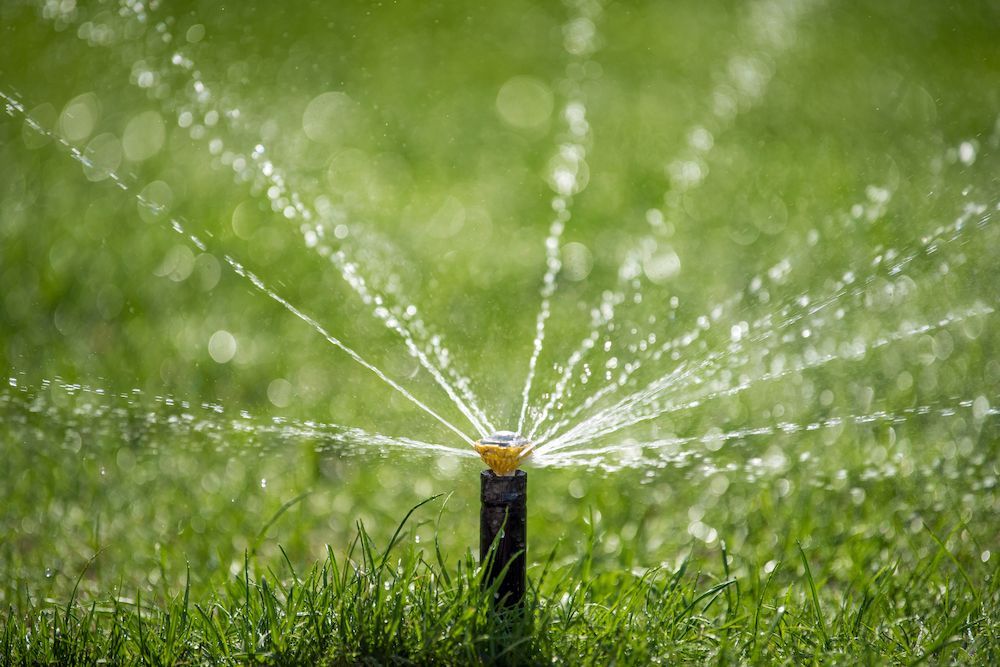Irrigation Systems
Creating the right watering plan for your landscape is extremely important and is something that we at Brea Landscape pride ourselves on getting right. No matter how big or small the project, we begin assessing irrigation needs and solutions right from the beginning so that creating and installing an efficient and low-maintenance irrigation system for multi-purpose landscaping is essential for maintaining the health and vitality of plants while conserving water and minimizing maintenance requirements.
By carefully planning and implementing an irrigation system tailored to the specific needs of the landscape, you can ensure optimal watering efficiency and plant health while reducing water waste and labor-intensive upkeep. Here's how Brea Landscaping works to ensure you have an awesome irrigation system to nurture and protect your landscape investment:
Planning Phase:
- Assess Irrigation Needs: Begin by evaluating the plan against the layout, soil conditions, and water requirements of the landscape. Identify areas with different water needs, such as lawns, flower beds, vegetable gardens, and shrub borders, and determine the optimal irrigation methods for each zone.
- Choose Irrigation Methods: Select irrigation methods that are well-suited to the size and layout of the landscape, as well as the specific needs of plants. Options include drip irrigation for precise watering of individual plants or rows, sprinkler systems for larger areas such as lawns or flower beds, and soaker hoses for narrow or irregularly shaped areas.
- Consider Water Source and Pressure: Determine the water source and pressure available for irrigation and select irrigation components, such as valves, pipes, and emitters, that are compatible with the water source and pressure levels. Consider installing a pressure regulator to ensure consistent water flow and prevent damage to irrigation components.
- Account for Slopes and Drainage: Take into account the slope of the landscape and plan for proper drainage to prevent runoff and water pooling. Install drip lines or soaker hoses on slopes to minimize water loss and ensure efficient water distribution to plants.

Contact Us

Installation Phase:
- Prepare the Site: Clear the area of any obstacles such as rocks, roots, or debris that may interfere with the installation of irrigation components. Mark the locations of irrigation lines, valves, and emitters according to the irrigation plan.
- Install Mainline and Distribution Lines: Begin by installing the mainline, which carries water from the water source to the irrigation zones. Next, install distribution lines to deliver water to individual planting areas, ensuring proper spacing and alignment to maximize coverage and efficiency.
- Install Irrigation Components: Install irrigation components such as valves, filters, pressure regulators, and backflow preventers according to manufacturer specifications. Connect drip lines, soaker hoses, or sprinkler heads to distribution lines, ensuring tight connections and proper alignment for optimal water distribution.
- Test and Adjust System: Once the irrigation system is installed, thoroughly test each zone to ensure proper operation and coverage. Check for leaks, clogs, or other issues and make any necessary adjustments to ensure uniform water distribution and efficient irrigation.

Maintenance and Management:
- Monitor Watering Needs: Regularly monitor the watering needs of plants and adjust irrigation schedules as needed based on weather conditions, soil moisture levels, and plant growth. Use moisture meters or soil sensors to gauge soil moisture levels and avoid overwatering or underwatering.
- Perform Routine Maintenance: Conduct regular maintenance checks to ensure the proper functioning of the irrigation system. Clean filters, flush drip lines, and inspect valves, pipes, and emitters for leaks, clogs, or damage. Replace worn or damaged components as needed to prevent water waste and ensure efficient operation.
- Adjust Seasonally: Adjust irrigation schedules seasonally to accommodate changes in weather patterns, temperature, and plant growth. Increase watering frequency during hot, dry periods and reduce watering during cooler, wetter months to promote healthy plant growth and conserve water.
- Mulch and Weed Control: Apply mulch to planting areas to help retain moisture, suppress weeds, and reduce water evaporation from the soil. Keep planting areas free of weeds and debris to ensure efficient water delivery to plants and prevent obstruction of irrigation components.
By following these steps and implementing an efficient and low-maintenance irrigation system tailored to the specific needs of multi-purpose landscaping, you can ensure optimal water efficiency, plant health, and landscape beauty while minimizing water waste and labor-intensive upkeep. With proper planning, installation, and management, an irrigation system can be an invaluable asset for maintaining a healthy and vibrant landscape year-round.
Brea Landscaping takes the hassle out of irrigation management by offering comprehensive maintenance services tailored to your needs. Our team ensures your irrigation system operates efficiently by conducting regular inspections, adjusting sprinkler heads for optimal coverage, and repairing any leaks or malfunctions promptly. We also schedule seasonal tune-ups to prepare your system for changing weather conditions, maximizing water conservation and plant health. With our expertise and attention to detail, you can trust Brea Landscaping to keep your irrigation system running smoothly, so you can enjoy a lush and vibrant landscape all year round.